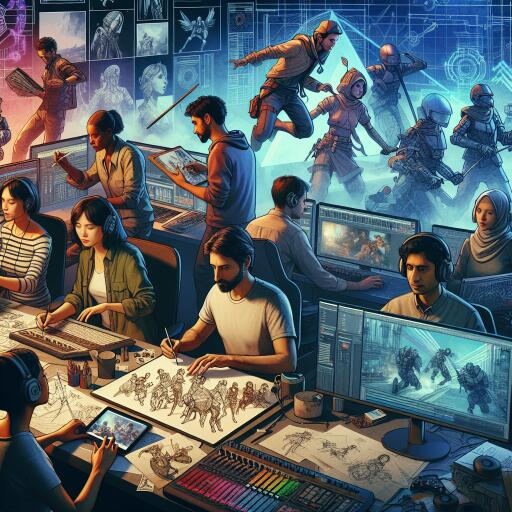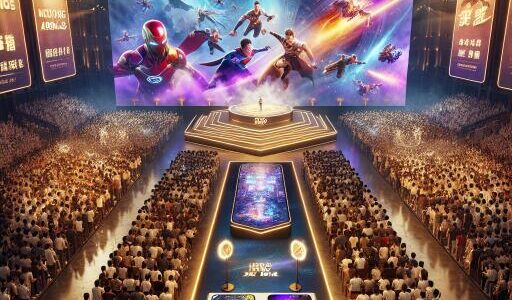The Crucial Role of Visuals in Video Game Development
In the realm of video game development, the journey from concept to a fully immersive experience encompasses numerous critical stages. Key among these is the pre-production phase—where the blueprint of the game’s design not only forecasts potential success but lays the groundwork for the game’s visual and narrative identity.
At the heart of transforming a game’s conceptual blueprint into an engaging reality is the artistic innovation and vision furnished by the game’s artwork team. This squad of artistic talents strives beyond crafting mere aesthetics; they breathe life into the game’s world, characterizing it with a unique visual identity that immediately transports the player into its universe at the inception of gameplay.
Visual elements serve as the game’s primary communication channel with its audience. From the game’s environment to its characters, the artistic presentation plays an indispensable role in storytelling and gameplay dynamics. It guides players through the game world, intuitively conveying information about interactive elements—such as distinguishing between friend and foe, or identifying objects within the game environment that may either be life-saving or perilous.
The evolution of rendering technologies and artistic tools has significantly elevated the gaming sector’s capability to offer more sophisticated and lifelike visual simulations. This advancement is crucial, narrowing the gap between the gaming and motion picture industries in terms of investment, revenue generation, and cultural impact. An artwork studio’s input in sculpting the project’s visual identity thus holds monumental significance, directly affecting the player’s interaction and experience with the game.
In direct contrast to mainstream gaming conglomerates, independent game developers often prioritize gameplay mechanics over visual flamboyance. This focus on seamless gameplay and continual player engagement is a testament to the indie sector’s innovation and creative freedom. Despite operating with more limited resources, these studios manage to deliver compelling gameplay experiences, often employing retro-inspired visual styles to evoke nostalgia or leverage established gaming mechanics, particularly in genres such as 2D beat-em-ups and side-scrolling adventures.
The gaming industry has come a long way from its inception, when games were developed solely by programmers with little to no involvement from specialized designers or artists. The consequence was a generation of games lacking in visual depth and engagement. In contemporary game development, however, even titles that draw heavily from retro aesthetics are meticulously designed to facilitate a rich and immersive player experience. The visual narrative complements gameplay, embedding players within the game world and enriching their overall experience.
In conclusion, the artistic and visual elements of a video game are far from mere embellishments. They are fundamental to the game’s identity, shaping the player’s journey and enhancing the overall immersion. From vibrant color palettes to thoughtful design compositions, the artistic team’s role is vital in weaving the visual tapestry that defines the game’s universe. As technology continues to advance, the possibilities for artistic expression and player interaction within this digital landscape only broaden, heralding a future where game design and visual artistry walk hand in hand toward new horizons of gaming excellence.









